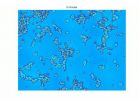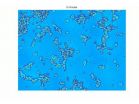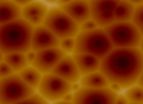(Press-News.org) VIDEO:
Using spatial light interference microscopy (SLIM) techniques developed by Gabriel Popescu, director of the Quantitative Light Imaging Laboratory at the Beckman Institute at the University of Illinois, researchers were able...
Click here for more information.
A new technique, developed by researchers in the Quantitative Light Imaging Laboratory at the Beckman Institute at the University of Illinois, provides a method to noninvasively measure human neural networks in order to characterize how they form.
Using spatial light interference microscopy (SLIM) techniques developed by Gabriel Popescu, director of the lab, the researchers were able to show for the first time how human embryonic stem cell-derived neurons within a network grow, organize spatially, and dynamically transport materials to one another.
"Because our method is label-free, we've imaged these type of neurons differentiating and maturing from neuron progenitor cells over 12 days without damage," said Popescu. "I think this (technique) is pretty much the only way you can monitor for such a long time."
Scientific Reports recently published their paper on the topic, "Label-Free Characterization of Emerging Human Neuronal Networks."
Using time-lapse measurement, the researchers are able to watch the changes over time. "We've been looking at the neurons every 10 minutes for 24 hours to see how the spatial organization and mass transport dynamics change," said Taewoo Kim, one of the lead authors on the paper.
The SLIM technique measures the optical path length shift distribution, or the effective length of the path that light follows through the sample. "The light going through the neuron itself will be in a sense slower than the light going through the media around the neuron," explains Kim. Accounting for that difference allows the researchers to see cell activity—how the cells are moving, forming neural clusters, and then connecting with other cells within the cluster or with other clusters of cells.
"Individual neurons act like they are getting on Facebook," explains Popescu. "In our movies you can see how they extend these arms, these processes, and begin forming new connections, establishing a network." Like many users of Facebook, once some connections have been made, the neurons divert attention from looking for more connections and begin to communicate with one another—exchanging materials and information. According to the researchers, the communication process begins after about 10 hours; for the first 10 hours the studies show that the main neuronal activity is dedicated to creating mass in the form of neural extensions or neurites, which allows them to extend their reach.
"Since SLIM allows us to simultaneously measure several fundamental properties of these neural networks as they form, we were able to for the first time understand and characterize the link between changes that occur across a broad range of different spatial and temporal scales. This is impossible to do with any other existing technology" explains Mustafa Mir, a lead author on the study.
The researchers used untreated cells and cells that were treated with lithium chloride, which delays neurite growth. This allowed them to compare the mass of both the treated and untreated cells, and showed that the main growth of cells is during the connection phase, where dendrites are being extended within and between clusters.
"When we first compared the data from the treated and untreated samples, the potential of this technique to answer important questions in neuroscience and developmental biology became clear. Many diseases result in subtle changes in how neural networks organize and behave, and now we have a tool to study these changes in a practical manner," said Mir.
The work is done in conjunction with a science and technology center sponsored by the National Science Foundation, Emergent Behaviors of Integrated Cellular Systems (EBICS), which is a multi-institutional effort led by MIT, Georgia Tech and the University of Illinois. The Illinois site is led by Rashid Bashir, from the Beckman 3D Micro- and Nanosystems Group and head of the Illinois Department of Bioengineering.
EBICS is examining the way that complex systems and patterns rise out of relatively simple interactions with a goal of building living, multi-cellular machines that solve real-world problems in health, security and the environment.
"Through this center in the past four years, we've developed a number of tools trying to understand emergence, trying to define what emergence means," said Popescu. "This paper is a clear example of our progress toward defining and quantifying this important and universal phenomena.
"We developed these methods based on SLIM to understand at what scale the cells get organized, they become predictable. We quantify emergence versus spatial and temporal scales at which order occurs. The formation of a neuron network is a beautiful example of how emergence occurs. You deploy the cells that have nothing to do with one another—they are completely independent. Then, in less than 24 hours they start to talk to one another—operate more as an ensemble, an organized group, rather than as individuals. Using SLIM we can attest that, although structurally, individual cells do not change much over short time scales, it is their arrangement in space and their collective behavior in time that evolves quickly."
Popescu hopes that his work will help in building machines that can help with health-related questions, including Alzheimer's, memory-related conditions, and aging. The first step is to identify the deterministic behavior of the neural cells and discover treatments that enhance this predictable behavior.
"I think we have a set of good tools to both structurally and dynamically tell the difference when cells are functioning in various modes now. The plan is to control the predictable part, such as material transport in neurons or beating in heart cells, and hopefully get the cells to accomplish small tasks," said Popescu.
"Although in this study we have used SLIM to examine neural networks, the technology showcased here can be applied to a wide variety of biological systems, this is only the tip of the iceberg," said Mir.
"SLIM technology holds tremendous promise for imaging not only cell-based networks, but also whole slices of brain tissue, where the connections laid down during development are preserved and natural functionalities are expressed," said Martha Gillette, a neuroscientist in the Neurotech Group at the Beckman Institute and collaborator on the study. "Heterogeneities among individual cells of functionally specialized brain regions are emerging as key contributors to healthy versus diseased states. The ability to analyze individual cells within a multicellular micro-environment that preserves the native structural and functional complexity of the brain is a major challenge that can be addressed using SLIM."
SLIM is currently being installed in the Microscopy Suite at the Beckman Institute in order to allow other researchers access to this imaging technique.
INFORMATION:
New technique sheds light on human neural networks
SLIM shows stem cell-derived neurons growing, organizing and transporting materials
2014-03-24
ELSE PRESS RELEASES FROM THIS DATE:
Life lessons: Children learn aggressive ways of thinking from violent video games
2014-03-24
AMES, Iowa – Children who repeatedly play violent video games are learning thought patterns that will stick with them and influence behaviors as they grow older, according to a new study by Iowa State University researchers. The effect is the same regardless of age, gender or culture. Douglas Gentile, an associate professor of psychology and lead author of the study published in JAMA Pediatrics, says it is really no different than learning math or to play the piano.
"If you practice over and over, you have that knowledge in your head. The fact that you haven't played ...
Obamacare: 42 percent of Americans can't explain a deductible
2014-03-24
The week before open enrollment closes for new health care exchanges, a study by researchers at the USC Schaeffer Center for Health Policy and Economics and the USC Dornsife Center for Economic and Social Research shows that those who might potentially benefit the most from the Affordable Care Act — including those earning near the Federal Poverty Level — are also the most clueless about health care policies.
The opening of health care exchanges last year was roiled in controversy over technical glitches. Obamacare has since enrolled more than 5 million people, according ...
One in 10 male, same-sex Craigslist ads seek men who don't identify as gay
2014-03-24
March 24, 2014 -- Online sexual hook-ups present a unique opportunity to explore many factors of decision-making that inform sexual health. A study conducted by Eric Schrimshaw, PhD, at Columbia University's Mailman School of Public Health and Martin J. Downing, Jr., PhD, of the National Development and Research Institutes, found evidence that men having sex with men use the Internet to find sexual partners who do not identify as gay, either to fulfill a fantasy or because it allows anonymous sexual encounters without discovery. The findings are online in the journal, ...
Adult day-care services boost beneficial stress hormones in caregivers
2014-03-24
Family caregivers show an increase in the beneficial stress hormone DHEA-S on days when they use an adult day care service for their relatives with dementia, according to researchers at Penn State and the University of Texas at Austin.
DHEA-S controls the harmful effects of cortisol and is associated with better long-term health.
"This is one of the first studies to show that DHEA-S can be modified by an intervention, which in our case, was the use of an adult day care service," said Steven Zarit, Distinguished Professor of Human Development and Family Studies, Penn ...
Parallel programming may not be so daunting
2014-03-24
Computer chips have stopped getting faster: The regular performance improvements we've come to expect are now the result of chipmakers' adding more cores, or processing units, to their chips, rather than increasing their clock speed.
In theory, doubling the number of cores doubles the chip's efficiency, but splitting up computations so that they run efficiently in parallel isn't easy. On the other hand, say a trio of computer scientists from MIT, Israel's Technion, and Microsoft Research, neither is it as hard as had been feared.
Commercial software developers writing ...
New perspective for soil clean-up: Microscopic ciliates transport poisonous tar substances
2014-03-24
You must use a microscope to spot the new helpers that can assist in biological soil clean-up (bioremediation). They are small, mobile microorganisms, such as the unicellular slipper-shaped ciliates that can be found in stale water in a flower vase, where they feed on bacteria. New results from Aarhus University indicate that such mobile microorganisms can play a surprising key role in bioremediation of soil which is contaminated with so-called PAHs (Polycyclic Aromatic Hydrocarbons).
PAH are toxic tar substances formed during incomplete combustion in, for example, car ...
New technique for identifying gene-enhancers
2014-03-24
An international team led by researchers with the Lawrence Berkeley National Laboratory (Berkeley Lab) has developed a new technique for identifying gene enhancers - sequences of DNA that act to amplify the expression of a specific gene – in the genomes of humans and other mammals. Called SIF-seq, for site-specific integration fluorescence-activated cell sorting followed by sequencing, this new technique complements existing genomic tools, such as ChIP-seq (chromatin immunoprecipitation followed by sequencing), and offers some additional benefits.
"While ChIP-seq is very ...
Smokers' bitter taste buds may be on the fritz
2014-03-24
Smokers and those who have quit cannot fully appreciate the full flavor of a cup of coffee, because many cannot taste the bitterness of their regular caffeine kick. This is the finding of a study led by Nelly Jacob of the Pitié-Salpêtrière Hospital APHP in France, published in Springer's journal Chemosensory Perception.
It is already known that smoking, and especially the toxic chemicals in tobacco, causes a loss of taste among smokers. It also causes structural changes to the fungiform papillae of the tongue where the taste buds are located. However, it is not yet known ...
A mathematical equation that explains the behavior of nanofoams
2014-03-24
This news release is available in Spanish.
A research study, participated in by Universidad Carlos III de Madrid (UC3M), has discovered that nanometric-size foam structures follow the same universal laws as does soap lather: small bubbles disappear in favor of the larger ones.
The scientific team, made up of researchers from the Consejo Superior de Investigaciones Científicas (Spanish National Research Council) - CSIC, the Universidad Pontificia Comillas de Madrid- UPCO, and UC3M, reached this conclusion after producing and characterizing nanofoam formed by ion ...
Plugging the hole in Hawking's black hole theory
2014-03-24
EAST LANSING, Mich. --- Recently physicists have been poking holes again in Stephen Hawking's black hole theory – including Hawking himself. For decades physicists across the globe have been trying to figure out the mysteries of black holes – those fascinating monstrous entities that have such intense gravitational pull that nothing – not even light – can escape from them. Now Professor Chris Adami, Michigan State University, has jumped into the fray.
The debate about the behavior of black holes, which has been ongoing since 1975, was reignited when Hawking posted a ...
LAST 30 PRESS RELEASES:
The impact of family dynamics on eating behaviour – how going home for Christmas can change how you eat
Tracing the quick synthesis of an industrially important catalyst
New software sheds light on cancer’s hidden genetic networks
UT Health San Antonio awarded $3 million in CPRIT grants to bolster cancer research and prevention efforts in South Texas
Third symposium spotlights global challenge of new contaminants in China’s fight against pollution
From straw to soil harmony: International team reveals how biochar supercharges carbon-smart farming
Myeloma: How AI is redrawing the map of cancer care
Manhattan E. Charurat, Ph.D., MHS invested as the Homer and Martha Gudelsky Distinguished Professor in Medicine at the University of Maryland School of Medicine
Insilico Medicine’s Pharma.AI Q4 Winter Launch Recap: Revolutionizing drug discovery with cutting-edge AI innovations, accelerating the path to pharmaceutical superintelligence
Nanoplastics have diet-dependent impacts on digestive system health
Brain neuron death occurs throughout life and increases with age, a natural human protein drug may halt neuron death in Alzheimer’s disease
SPIE and CLP announce the recipients of the 2025 Advanced Photonics Young Innovator Award
Lessons from the Caldor Fire’s Christmas Valley ‘Miracle’
Ant societies rose by trading individual protection for collective power
Research reveals how ancient viral DNA shapes early embryonic development
A molecular gatekeeper that controls protein synthesis
New ‘cloaking device’ concept to shield sensitive tech from magnetic fields
Researchers show impact of mountain building and climate change on alpine biodiversity
Study models the transition from Neanderthals to modern humans in Europe
University of Phoenix College of Doctoral Studies releases white paper on AI-driven skilling to reduce burnout and restore worker autonomy
AIs fail at the game of visual “telephone”
The levers for a sustainable food system
Potential changes in US homelessness by ending federal support for housing first programs
Vulnerability of large language models to prompt injection when providing medical advice
Researchers develop new system for high-energy-density, long-life, multi-electron transfer bromine-based flow batteries
Ending federal support for housing first programs could increase U.S. homelessness by 5% in one year, new JAMA study finds
New research uncovers molecular ‘safety switch’ shielding cancers from immune attack
Bacteria resisting viral infection can still sink carbon to ocean floor
Younger biological age may increase depression risk in older women during COVID-19
Bharat Innovates 2026 National Basecamp Showcases India’s Most Promising Deep-Tech Ventures
[Press-News.org] New technique sheds light on human neural networksSLIM shows stem cell-derived neurons growing, organizing and transporting materials





